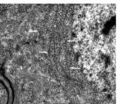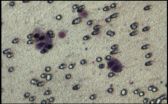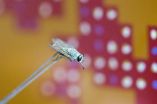(Press-News.org) CLEVELAND -- A new study in Journal of General Internal Medicine reports that an hour-long educational coaching session and two or three follow-up phone calls after a hospital stay reduced re-admission odds by 39 percent among Medicare patients. The study also found that the average cost of care was reduced by $3,700 per patient for those patients who received the education session versus those who did not.
This study is the first to report on a more comprehensive picture of healthcare use in the six months following the patient-centered coaching, called Care Transitions Intervention (CTI), and to estimate costs avoided using the data.
"When patients are discharged, they are often ill-equipped to self manage," said Stefan Gravenstein, MD, senior author of the study and Interim Chief of the Division of Geriatrics at University Hospitals (UH) Case Medical Center. "Typically, in the Medicare population, nearly one in five patients, or 20 percent, is re-admitted within the 30 days following discharge from the hospital. For all patients, 30-day re-admission is only about one in seven or eight patients instead of one in five.
"With this study, we found that sending someone to the patient's home who helped the patient (or their caregiver) gain confidence in recounting the patient's medical issues, medication, and when and how to reach out for help significantly reduced re-hospitalization and costs. And the teacher did not have to be a health care professional such as a doctor or a nurse, but just needed to be specially trained for this coaching activity," said Dr. Gravenstein who is also a Professor of Medicine at Case Western Reserve University School of Medicine and was at Brown University Medical School and School of Public Health during the time of the study.
The study was conducted with 1,300 Medicare patients at six hospitals in Rhode Island, where Dr. Gravenstein also serves as the clinical director of that state's Medicare Quality Improvement Organization called Healthcentric Advisors. The study was funded by the Centers for Medicare and Medicaid (CMS), which contracted with Healthcentric Advisors to improve care transitions across the state.
Out of the 1,300 patients, 321 – the intervention group -- received the home training and 919 – the internal control group -- who were eligible but declined the training, or if they had agreed, never scheduled a home visit or were not home when the coach visited. To balance for a potential bias in selecting patients, the researchers also constructed an external control group of about 11,000 Medicare patients from the same hospitals who would have been eligible for participation, but who were not approached.
The study found that the intervention group had significantly lower utilization in the six months after discharge and lower mean total health care costs ($14,700 vs. $18,700). An average of $3,700 was avoided for each patient who received the intervention compared with the internal control group, and more costs were avoided when compared to the external control group.
"Although outpatient costs were up a little, they were dramatically offset by savings in later hospital care," Dr. Gravenstein said. "If all hospitalized Medicare patients received this education and similarly benefited, it would translate into many billions of dollars of expensive costs avoided. This is a great example of a way in which higher quality care improves lives, while bending the cost curve."
The intervention began in the hospital with a brief introduction, and continued into the month following discharge, including one home visit and two to three phone calls. The home visit was a patient-centered coaching intervention to empower individuals to better manage their health. It was developed around four points, or "pillars." The first was ensuring that the patients knew their clinical conditions from their personal health record. The second was that patients knew their medications, what they were, when to take them, and for which symptoms. The third was to know the signs or symptoms – the red flags -- of when to reach out for help. And the fourth was to empower the patient to know how to reach out for help when one of those red flags came up.
"We encourage the patients and their caregivers to get the help when they need it," said Dr. Gravenstein. "It may not be serious enough to visit the emergency room and their doctor's office may say it won't have an opening until next week. They need to feel comfortable and have the confidence to say to the doctor's office, 'I need to come in today.' when they develop one of the warning signs they are coached on."
In addition to UH Case Medical Center where extensions of this work continue, other organizations involved in the study were Brown University School of Public Health, Alpert Medical School of Brown University, and the University of Colorado. Lead author of the paper is Rebekah Gardner, MD, Senior Medical Scientist at Heathcentric Advisors which is a non-profit health care quality improvement agency and Assistant Professor at Brown University.
INFORMATION:
The study appears in the June 2014 issue of the Journal of General Internal Medicine,
(Volume 29, Issue 6, pp 878-884) http://link.springer.com/article/10.1007/s11606-014-2814-0
About University Hospitals
University Hospitals, the second largest employer in Northeast Ohio with 25,000 employees, serves the needs of patients through an integrated network of 12 hospitals, 26 outpatient centers and primary care physician offices in 15 counties. At the core of our $3.5 billion health system is University Hospitals Case Medical Center, one of only 18 hospitals in the country to have been named to U.S. News & World Report's most exclusive rankings list: the Best Hospitals 2013-14 Honor Roll. The primary affiliate of Case Western Reserve University School of Medicine, UH Case Medical Center is home to some of the most prestigious clinical and research centers of excellence in the nation, including cancer, pediatrics, women's health, orthopaedics, radiology, neuroscience, cardiology and cardiovascular surgery, digestive health, transplantation and genetics. Its main campus includes UH Rainbow Babies & Children's Hospital, ranked among the top children's hospitals in the nation; UH MacDonald Women's Hospital, Ohio's only hospital for women; and UH Seidman Cancer Center, part of the NCI-designated Case Comprehensive Cancer Center at Case Western Reserve University. For more information, go to http://www.uhhospitals.org
Study: Hour-long home coaching decreases re-admission, costs for Medicare patients
Journal of General Internal Medicine study directed by Stefan Gravenstein, of University Hospitals Case Medical Center
2014-07-17
ELSE PRESS RELEASES FROM THIS DATE:
Splice-switching oligonucleotide therapeutics is new method for editing gene transcript
2014-07-17
Splice-Switching Oligonucleotide Therapeutics Is Promising New Method for Editing Gene Transcripts
New Rochelle, NY, July 17, 2014—In splice-switching, an innovative therapeutic approach, targeted oligonucleotide drugs alter the editing of a gene transcript to produce the desired form of a protein. Developments in this rapidly advancing field have already led to promising treatments for such diseases as Duchenne Muscular Dystrophy and spinal muscular atrophy, as described in an article in Human Gene Therapy, a peer-reviewed journal from Mary Ann Liebert, Inc., publishers. ...
Preventing foodborne illness, naturally -- with cinnamon
2014-07-17
PULLMAN, Wash. – Seeking ways to prevent some of the most serious foodborne illnesses caused by pathogenic bacteria, two Washington State University scientists have found promise in an ancient but common cooking spice: cinnamon.
Recent findings published in Food Control journal online suggest Cinnamomum cassia oil can work effectively as a natural antibacterial agent in the food industry. The study results add to a body of knowledge that will help improve food safety and reduce or eliminate cases of food poisoning and related deaths.
In the study, the essential oil ...
Anti-tank missile detector joins the fight against malaria
2014-07-17
State-of-the-art military hardware could soon fight malaria, one of the most deadly diseases on the planet.
Researchers at Monash University and the University of Melbourne have used an anti-tank Javelin missile detector, more commonly used in warfare to detect the enemy, in a new test to rapidly identify malaria parasites in blood.
Scientists say the novel idea, published in the journal Analysis, could set a new gold standard for malaria testing.
The technique is based on Fourier Transform Infrared (FITR) spectroscopy, which provides information on how molecules ...
Acupuncture and moxibustion reduces neuronal edema in Alzheimer's disease rats
2014-07-17
Aberrant Wnt signaling is possibly related to the pathological changes in Alzheimer's disease (AD). Axin and β-catenin protein is closely related to Wnt signaling. Zhou Hua and his team, Hubei University of Chinese Medicine, China confirmed that moxibustion or electroacupuncture, or both, at Baihui (GV20) and Shenshu (BL23) acupoints decreased axin protein expression, increased β-catenin protein expression, and alleviated neuronal cytoplasmic edema. These findings suggest that the mechanism underlying the neuroprotective effect of acupuncture in AD is associated ...
Who are responsible for protecting against neuron and synapse injury in immature rats?
2014-07-17
Fructose-1,6-diphosphate is a metabolic intermediate that promotes cell metabolism. Whether it can alleviate hippocampal neuronal injury caused by febrile convulsion remains unclear. Dr. Jianping Zhou, the Second Affiliated Hospital, Medical College of Xi'an Jiaotong University, China and his team established a repetitive febrile convulsion model in rats aged 21 days, equivalent to 3 years in humans, intraperitoneally administered fructose-1,6-diphosphate at 1,000 mg/kg into the rat model. Results showed that high-dose fructose-1,6-diphosphate reduced mitochondrial ...
Chemokine receptor 4 gene silencing blocks neuroblastoma metastasis in vitro
2014-07-17
Chemokine receptor 4 is a chemokine receptor that participates in tumor occurrence, growth and metastasis in vitro and its expression is upregulated during neuroblastoma metastasis. Dr. Xin Chen, the Affiliated Hospital of Qingdao University, China successfully constructed chemokine receptor 4 sequence-specific small interfering RNA (siRNA) plasmids, transfected into SH-SY5Y cells and found that down-regulation of chemokine receptor 4 can inhibit in vitro invasion of neuroblastoma. This paper was published in Neural Regeneration Research (Vol. 9, No. 10, 2014).
Article: ...
Intrathecal bumetanide has analgesic effects through inhibition of NKCC1
2014-07-17
Accumulating evidence has demonstrated that the sodium-potassium-chloride co-transporter 1 (NKCC1) and potassium-chloride co-transporter 2 (KCC2) have a role in the modulation of pain transmission at the spinal level through chloride regulation in the pain pathway and by effecting neuronal excitability and pain sensitization. Dr. Yanbing He Zhujiang Hospital, Southern Medical University, China and his team found that intrathecal bumetanide could increase NKCC1 expression and decrease KCC2 expression in spinal cord neurons of rats with incisional pain. The authors presumed ...
Attenuated inhibition of neuron membrane excitability contributes to childhood depression
2014-07-17
Accumulating evidence suggests that the nucleus accumbens, which is involved in mechanisms of reward and addiction, plays a role in the pathogenesis of depression and in the action of antidepressants. Dandan Liu and her team, Bio-X Institute, Shanghai Jiao Tong University, China for the first time using electrophysiological method studied the signaling transduction pathway mediated by dopamine D2-like receptor in the medium spiny neurons in the core of the nucleus accumbens in the juvenile Wistar Kyoto rat model of depression. They concluded that impaired inhibition of ...
NYU research on persons w/ HIV/AIDS not taking medication and not engaged in care
2014-07-17
Regular attendance at HIV primary care visits and high adherence to antiretroviral therapy (ART) are vital for people living with HIV/AIDS (PLHA), as these health behaviors lead to lowered rates of morbidity and mortality, increased quality of life, and reducing the risk of HIV transmission to others. However, a large proportion of PLHA in the United States are not sufficiently engaged in care and not taking ART when it is medically necessary.
A new study, "HIV-infected individuals who delay, decline, or discontinue antiretroviral therapy: Comparing clinic- and peer-recruited ...
Eradicating fatal sleeping sickness by killing off the tsetse fly
2014-07-17
A Brigham Young University ecologist is playing a role in the effort to curb a deadly disease affecting developing nations across equatorial Africa.
Steven L. Peck, a BYU professor of biology, has lent his expertise in understanding insect movement to help shape a UN-sanctioned eradication effort of the tsetse fly—a creature that passes the fatal African sleeping sickness to humans, domestic animals, and wildlife.
Using Peck's advanced computer models, crews from the UN's Food and Agriculture Organization will know where to concentrate their efforts to eliminate the ...
LAST 30 PRESS RELEASES:
Missed signals: Virginia’s septic strategies overlook critical timing, study warns
Delayed toxicities after CAR T cell therapy for multiple myeloma are connected and potentially preventable
Scientists find cellular key to helping plants survive in saltwater
Medical cannabis program reduces opioid use
Immunotherapy works for sepsis thanks to smart patient selection
Cardiovascular events 1 year after RSV infection in adults
US medical prices and health insurance premiums, 1999-2024
Medical cannabis and opioid receipt among adults with chronic pain
Multichannel 3D-printed bioactive scaffold combined with siRNA delivery for spinal cord injury recovery
Triaptosis—an emerging paradigm in cancer therapeutics
A new paradigm in spectroscopic sensing: The revolutionary leap of SERS-optical waveguide integration and ai-enabled ultra-sensitive detection
Sweet tooth: How blood sugar migration in diabetes affects cavity development
Lowest suicide rate is in December but some in media still promote holiday-suicide myth
Record-breaking cosmic explosion challenges astronomers’ understanding of gamma-ray bursts
Excessive heat harms young children’s development, study suggests
Quanta Books to publish popular math and physics titles by Terence Tao and David Tong
Philanthropic partnerships fund next-generation instruments for mid-sized telescopes
AI offers ‘roadmap’ to plant genetics
Myosin XI-1: A key molecular target for salt-tolerant crops
Pusan National University study highlights the health hazards of ultrafine particles from small home appliances with electric heating coils and brushed DC motors
Global first: New Indigenous-led research initiative to revitalize legal orders
Transforming acoustic waves with a chip
When climate risk hits home, people listen: Study reveals key to engagement with disaster preparedness messaging
Major breakthrough against diabetes thanks to a microbial molecule that disarms inflammation
Silicon chips on the brain: Researchers announce a new generation of brain-computer interface
Getting rest is the best
Towards sustainable organic synthesis – Mechanochemistry replaces lithium with sodium in organic reactions
Wireless device ‘speaks’ to the brain with light
Greenhouse gases to intensify extreme flooding in the Central Himalayas
New study sheds light on Milky Way's mysterious chemical history
[Press-News.org] Study: Hour-long home coaching decreases re-admission, costs for Medicare patientsJournal of General Internal Medicine study directed by Stefan Gravenstein, of University Hospitals Case Medical Center







